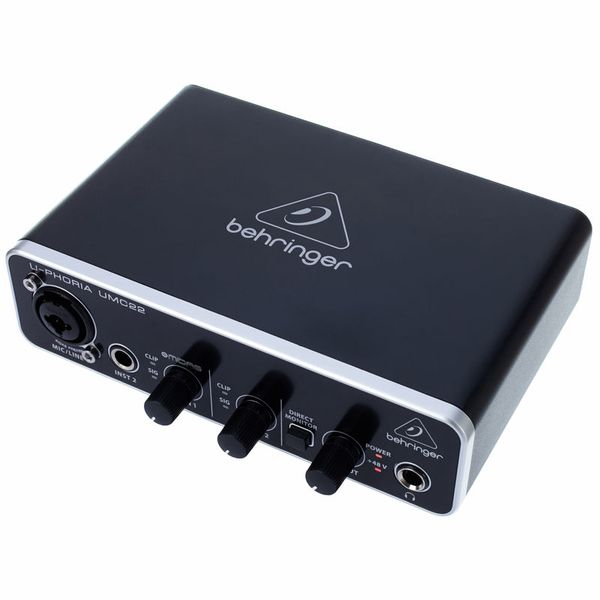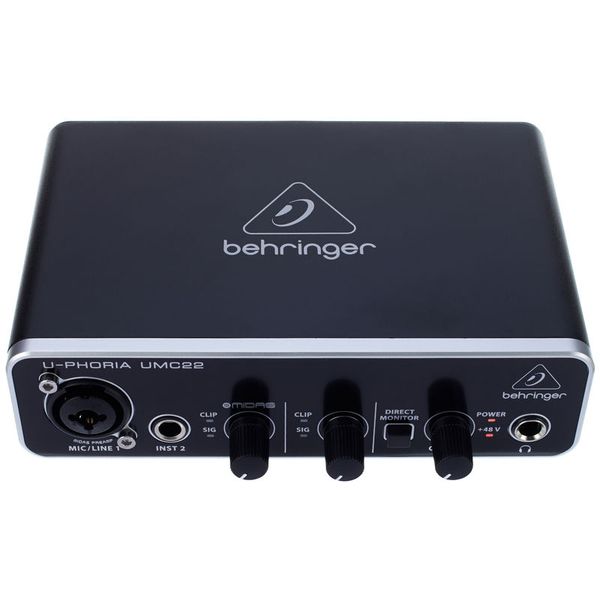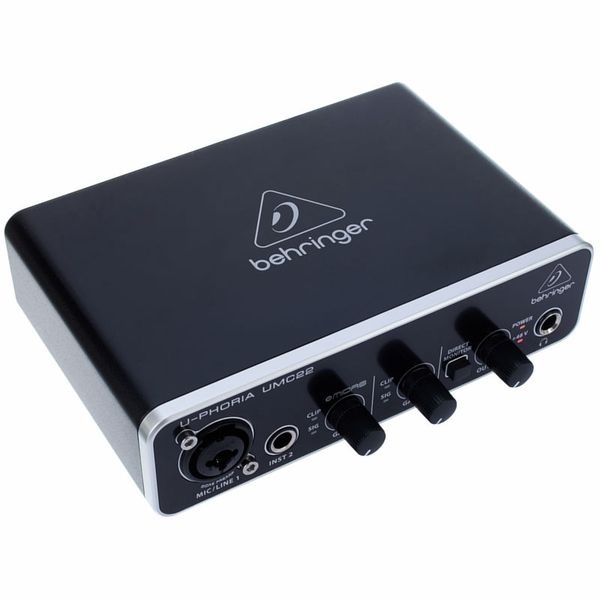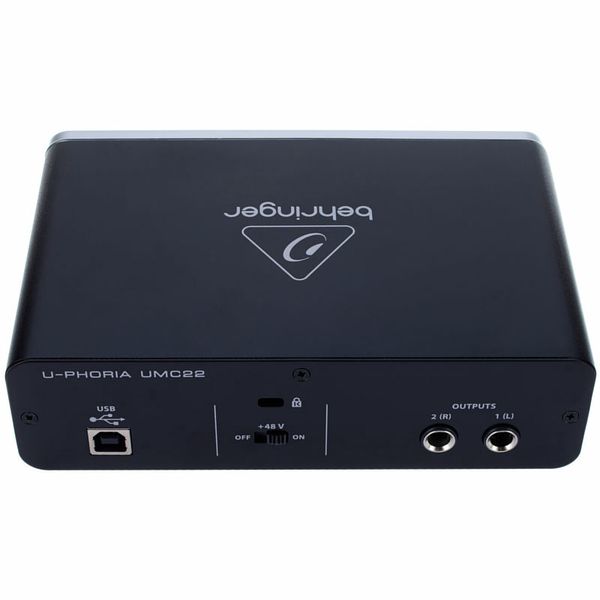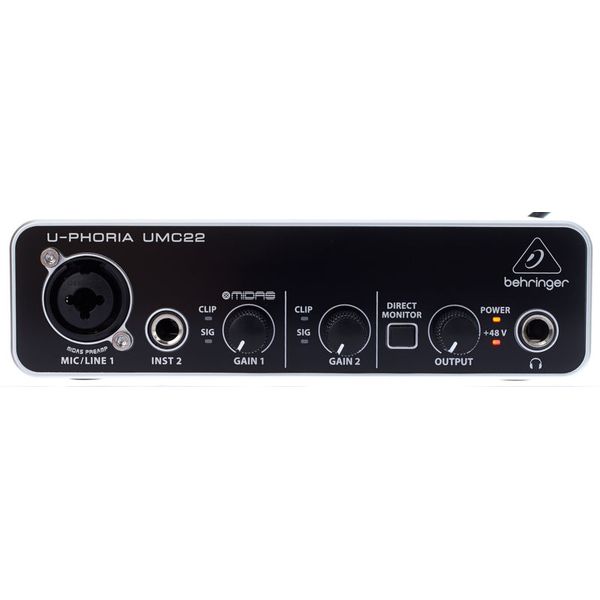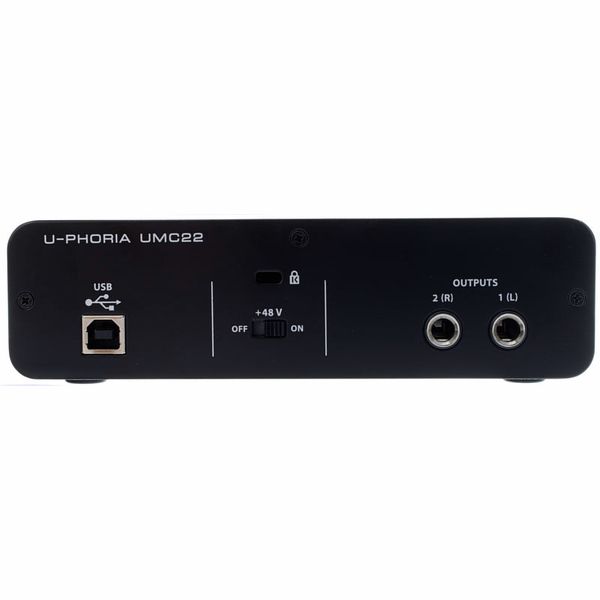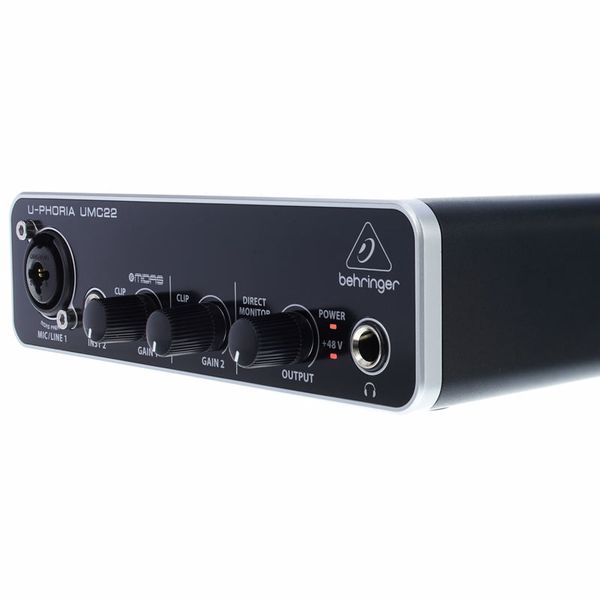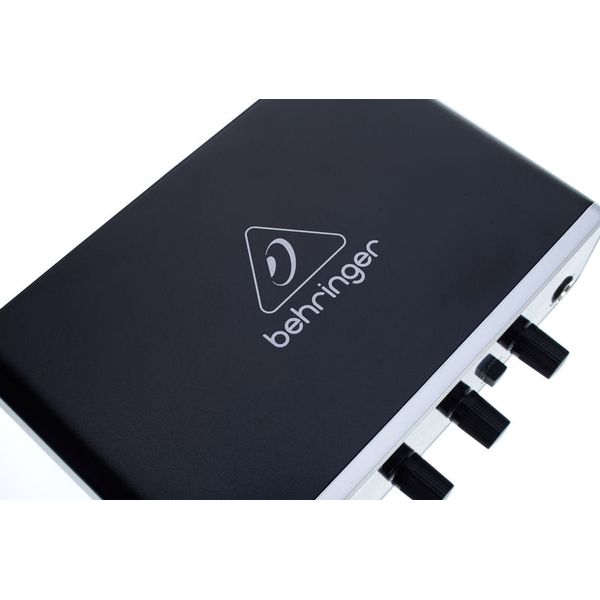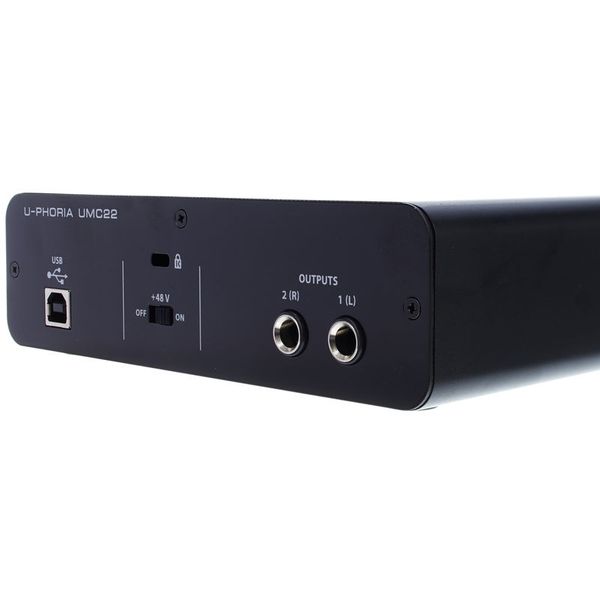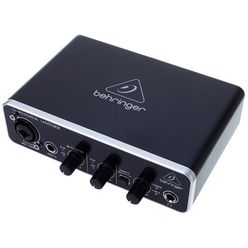2-Channel USB Audio Interface
- 16 Bit / 48 kHz
- 2 Inputs and 2 outputs
- 1 Combi jack XLR / 6.3 mm jack and 1x 6.3 mm jack
- MIDAS-designed microphone preamp with 48 V phantom power
- Guitar input
- Signal and clip display
- Direct monitoring with level control
- Headphone output: 6.3 mm jack
- 6.3 mm jack output
- USB Bus powered
- Metal housing
- Compatible with Windows XP, Vista, 7-10 and Mac OS
- Includes USB cable
Solid foundation at an affordable price
The Behringer U-Phoria UMC22 is a compact and exceptionally affordable USB audio interface which features two input and output audio channels, and is compatible with both Windows and MacOS DAW environments. Unlike the slightly lower-priced U-Phoria UM2, one of its inputs is equipped with a high-quality microphone preamplifier, developed by renowned British manufacturer Midas, which renders both detailed and natural recordings. The 16-bit/48kHz AD/DA internal conversion rate meets the basic requirement for professional recording. The U-Phoria UMC22 thus offers a solid and functional basis for the aspiring home-studio producer.
:format(jpeg))
A miniaturised studio
The Behringer U-Phoria UMC22’s two input and output channels provide everything needed for simple audio recordings. The mic/line XLR combo input provides 48V phantom power for condenser microphones, and is also available as a line input. The second line input is Hi-Z compatible, allowing high impedance instruments such as guitars and basses to be connected without an additional DI box. The Behringer U-Phoria UMC22 features a stereo output for monitors on balanced jacks, as well as a headphone output. Both output volumes are controlled simultaneously via a single knob on the front panel. A direct monitoring switch is also provided which allows the monitoring of both inputs of the Behringer U-Phoria UMC22 without any perceivable latency, an important feature when recording live vocals and instruments.
:format(jpeg))
A gateway to the home studio
The Behringer U-Phoria UMC22 is an affordable USB audio interface that provides the basic requirements for live recording and navigating DAW environments on a computer. The mic/line input and its high-quality preamp coupled with the Hi-Z input allow vocal and instrumental duets to be recorded effortlessly and to a high standard. The minimalist and portable design of this desktop interface allows it to be taken anywhere, and used in any context, not just musical ones. For instance, YouTubers or podcasters looking for a flexible alternative to a USB microphone will find the U-Phoria UMC22 to be an excellent choice.
:format(jpeg))
About Behringer
The company, which was founded in Germany by Uli Behringer and now manufactures its products in China, has been known for affordable and great-value equipment since its very first product, the Studio Exciter F. An array of mixing consoles (such as the Eurodesk MX8000), signal processors, and later sound amplification and monitoring equipment, has made it possible for countless musicians to fit out their home studios, practice rooms, and mobile PAs within budget limits that were previously unthinkable. The acquisition of other companies, including Midas, Klark Teknik, and TC Electronic, meant that new product groups were added - and also resulted in the technical expertise of these companies being incorporated into product development.
A sturdy companion
The Behringer U-Phoria UMC22 performs equally well "on the road”, thanks to its compact and robust metal casing. It is USB-powered, so no external PSU is required for operation. Mobile recording with a high-quality condenser microphone is just as possible as playing back audio tracks from a laptop on stage. Unlike larger audio interface in the series, the UMC22 does not have MIDI connectivity. However, this is unlikely to be a significant issue, since most modern keyboards come with a USB interface as standard to transmit MIDI to a computer.
:format(jpeg))
This is what customers who viewed this product bought
-
Behringer USB Audio Interfaces at a glance
-
Display USB Audio Interfaces from $ 50 - $ 70
-
Go to product group USB Audio Interfaces
-
Go to product group Audio Interfaces
-
Go to product group Studio and Recording Equipment
-
Show manufacturer details for Behringer
-
Behringer Studio and Recording Equipment at a glance





